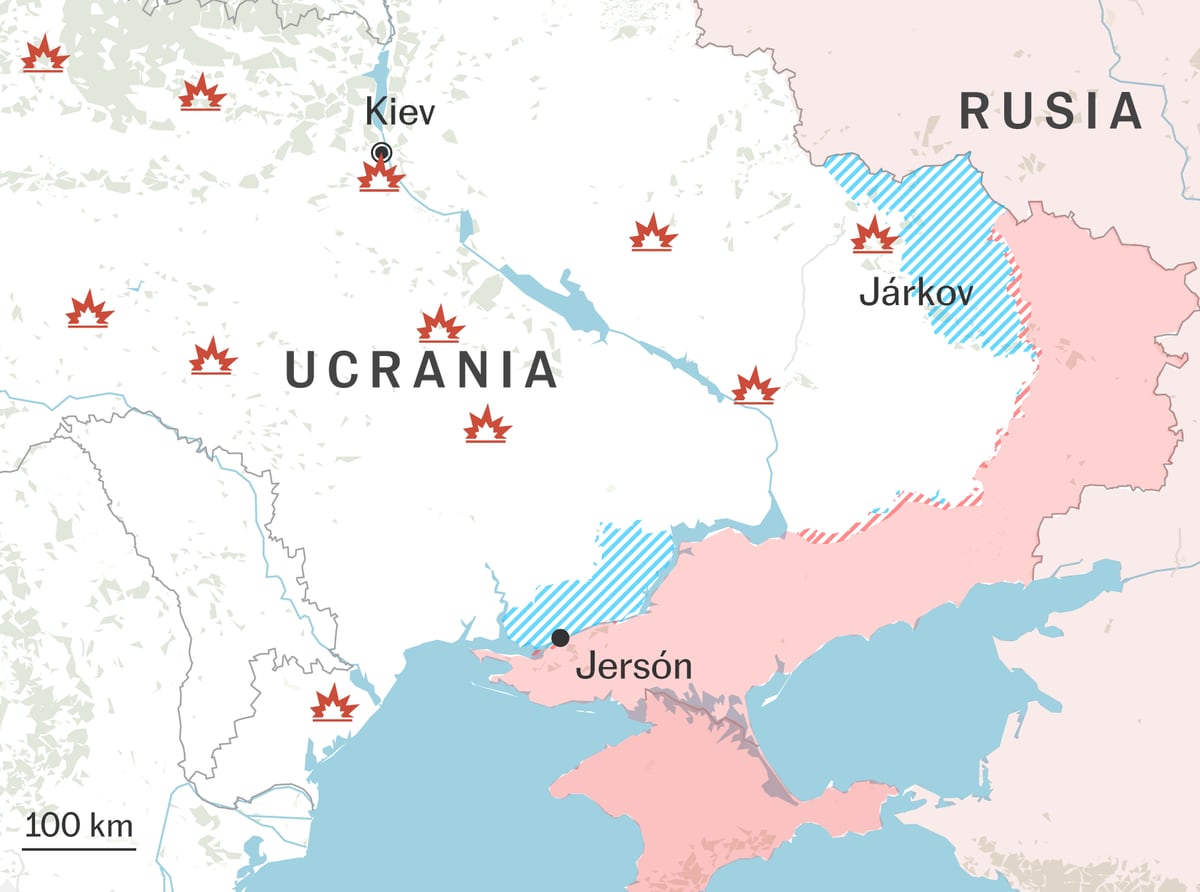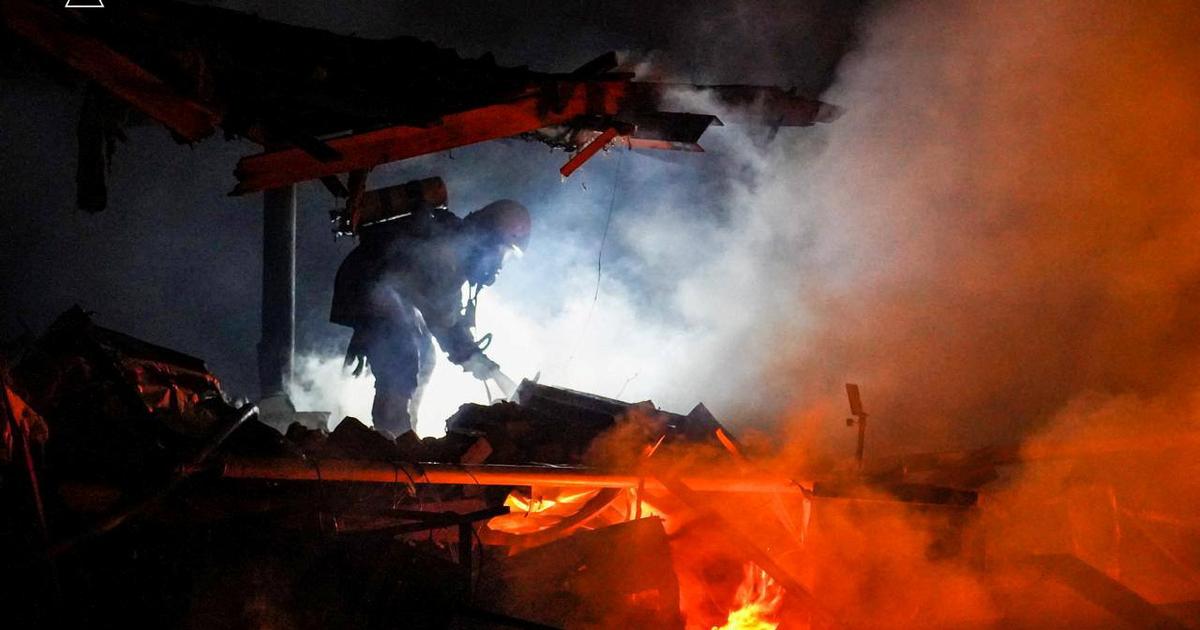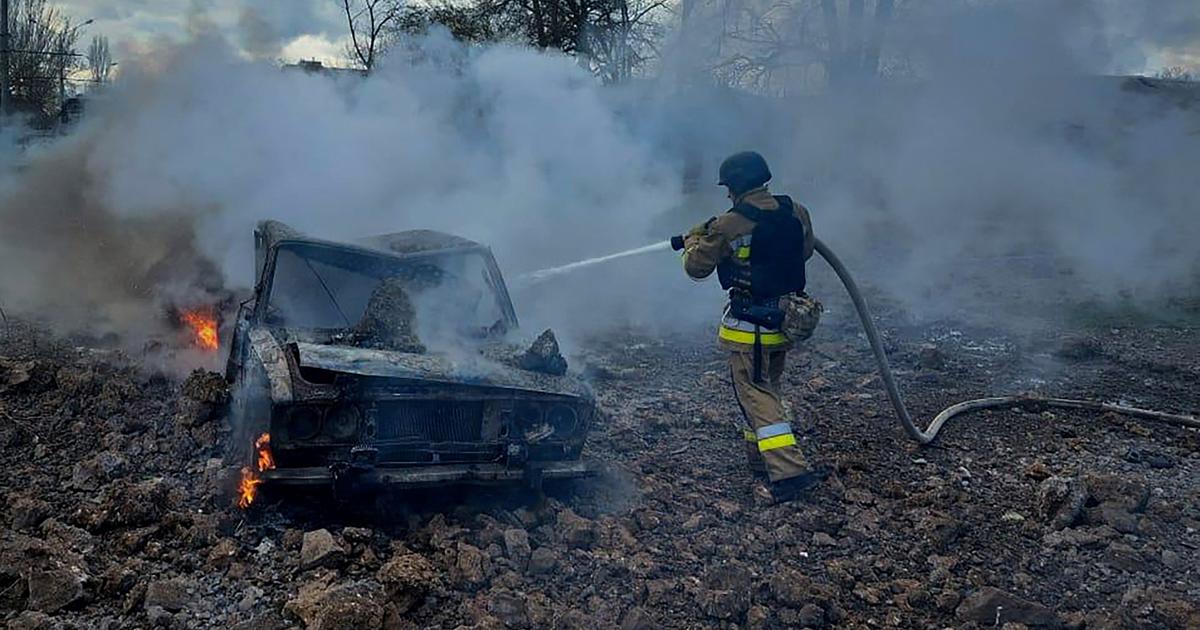Russia launched a wave of missiles last Tuesday that caused explosions in 13 provinces of Ukraine.
This is the largest offensive against key Ukrainian infrastructure carried out with rockets since the start of the invasion last February, according to the Institute for the Study of War (ISW).
The attacks take place four days after the withdrawal of the invaders from Kherson —the only Ukrainian provincial capital that the Kremlin had conquered since February—, and in full celebration of the G-20 summit, in which most of the countries most powerful in the world agreed on a communiqué condemning the Russian war in Ukraine.
A spokesman for the Ukrainian Air Force has quantified the offensive: about 100 cruise missiles hit infrastructure, mainly civilian, in the provinces of kyiv, Rivne, Yitomir, Lviv, Khmelnitsky, Dnipropetrovsk, Poltava, Vinnytsia, Odessa, Kirovohrad, Cherkasy, Volyn and Kharkiv.
The barrage is reminiscent of another carried out a month ago, when the president of Ukraine, Volodimir Zelensky, reported a coordinated attack in a dozen provinces.
The ISW estimates that Russia has used a "substantial" part of its precision missiles for this attack.
kyiv has claimed that its air defenses shot down 73 cruise missiles and all the drones involved in the offensive, an improvement in the precision of its defense systems: in the offensive last October they reported that they had intercepted 43 of the 84 projectiles that, according to Ukraine, had used Russia.
One of the explosions registered on Tuesday was in Przewodow, in a Polish town near the border with Ukraine, and caused the death of two people.
Polish President Andrzej Duda declared on Wednesday that there is no evidence that the missile was fired by Russia, and that the probable hypothesis is that it was a projectile launched by Ukrainian forces in their anti-aircraft defense efforts in the middle of the broad Russian offensive.
Researchers in Przewodow, this Wednesday.
Police of Poland (Reuters).
Damage after impact.
(Reuters).
Past days
November 10 |
The largest withdrawal organized by Russia since the departure of kyiv in March
region boundary
of Kherson
Checked
for Ukraine
dnieper river
Kherson
Withdrawal
announced
by Russia
bridges
Black Sea
Checked
by Russia
10km
region boundary
of Kherson
Checked
for Ukraine
dnieper river
Kherson
bridges
Withdrawal
announced
by Russia
Black Sea
Checked
by Russia
10km
region boundary
of Kherson
Checked
for Ukraine
dnieper river
Not going
Kakhovka
Kherson
bridges
Withdrawal
announced
by Russia
Black Sea
Checked
by Russia
10km
The Ukrainian counteroffensive in the Kherson region has achieved its goal: to expel Russian troops from the western bank of the Dnieper River.
The announcement of the withdrawal made by the Russian Ministry of Defense will mean, when carried out, the largest withdrawal organized by the invaders since the departure of the kyiv front at the end of March.
Ukrainian troops began an offensive in August that was intended to repel the Russians without the need for a direct confrontation at the front.
The attacks against military warehouses, troop concentration places and logistics centers have ended up making the situation of the occupiers untenable, according to the Institute for the Study of War (ISW).
The American organization considers that the Ukrainian offensive has been well planned and executed, and the Moscow forces had no other options than to carry out large-scale ground attacks or withdraw, as everything seems to indicate that it has ended up happening.
A spokesman for the Ukrainian army has indicated on Thursday that kyiv still cannot confirm the Russian withdrawal, but has pointed out that his troops have advanced seven kilometers in the area in the last day and controlled 12 towns.
Kherson is the only provincial capital that Russia has controlled since the start of the invasion of Ukraine.
The battle in this region, however, is far from over.
With the announcement of the withdrawal, however, a new phase has begun, according to the ISW, in which the Kremlin forces strive to withdraw their troops in a controlled manner, instead of completely stopping the Ukrainian counteroffensive.
kyiv's troops have been attacking Russian supply and ammunition centers on the left bank of the Dnieper River for months, where Moscow's soldiers were best positioned.
The combination of these blows, points out the ISW, with attacks directed at the bridges that allowed the occupying troops to overcome the Dnieper River, has ended up making it unfeasible for the occupants to send food and weapons to the right bank, which they are now abandoning.
The Ukrainian army, for its part, is silent on the military situation.
The country's president, Volodímir Zelenski, has wanted to put the brakes on triumphalism and has called for extreme caution.
The Russian commanders will try to slow down the advance of the kyiv forces to carry out the withdrawal, but the ISW rules out that it is a false announcement that hides a strategy to ambush the Ukrainians.
Images analyzed by the US organization show that Moscow troops have destroyed bridges near the town of Snihurivka, north of the city of Kherson, which shows movements aimed at a controlled withdrawal, unlike what happened in Kharkiv in September. , where the Russians fled in rout.
October 18 |
Russian drone attacks on civilian targets
Russia seeks to sow panic among Ukrainian civilians in different cities of the country with bomb drones.
The attacks with these Iranian-made unmanned vehicles have taken place between Monday and Tuesday, October 17 and 18, in the cities of kyiv and Zaporizhia, but also in towns in the rest of Ukraine, such as Vinnitsia, Sumi, Dnipropetrovsk or Mykolaiv.
The attacks in residential areas are in line with the Russian strategy of creating a state of psychological terror in the Ukrainian population with blows that do not carry any military advantage, according to the Institute for the Study of War (ISW).
Ukrainian Air Force spokesman Yuri Ignat said on Monday, October 17, that Russian forces launched 43 drones from southern Ukraine.
kyiv troops destroyed 37, a large part of which are Iranian Shahed-136 drone bombs, which have become the main Russian weapon in this phase of the war, in which the Ukrainian counter-offensive launched in early September has wrested the control of a large territory under Russian control in the east and south of the country.
Destroyed building in Mikolaiv.
@ZelenskyyUa
Smoke cloud over kyiv, this Tuesday.
Reuters
A destroyed building in Mikolaiv.
Reuters
A drone used by Russia.
kyiv
More information
The Russian offensive until November 10
Follow all the international information on
and
, or in
our weekly newsletter
.
Subscribe to continue reading
Read without limits
Keep reading
I'm already a subscriber








